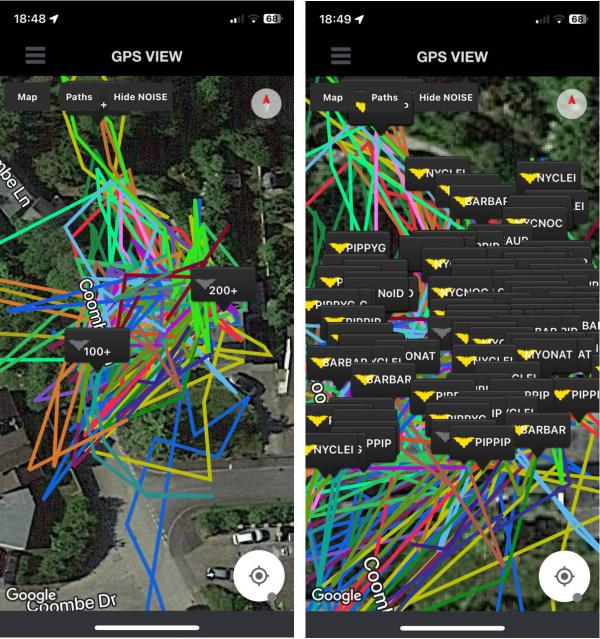The importance of a nature rich environment is not lost on anyone living in Landulph but are you aware of the sheer number of Bat species we have flying at dusk and dawn around our gardens and roofs?
When I first plugged my Echo Meter Touch 2 in to my phone and scanned one evening in July, I was astounded at how many different Bats were visiting my garden.
I had long been fascinated by the Soprano Pipistrelle nursery roost in the apex of my neighbourís roof where at certain level of dimpse (good old Devonian/Cornish word for the fading light) I would sit and watch hundreds of Pips fall out of the roof apex next door.
We have both species of Pipistrelle Bats here in our area: the common and less common Soprano Pipistrelle which likes to feed over and near water. Their diet of choice is Midges and Mosquitoes which is why Iím not plagued with these biting insects in the Summer.
We also have species of riverine Bat, one of which is the Noctule. It is the largest of the UK Bats, roosting and nesting in trees. Having both river and trees in my garden this species is abundant. It prefers to hunt in the dark and often, is one of the latest flying bats I record.
Another common species seen hunting over my pond and on the river is the Myotis Daubentonii, enjoying a diet of flies, midges and caddisflies.
There is a common misconception that bats carry rabies, but most don't! Only Noctule and Daubentons Bats have been identified in the UK as carrying rabies (and a different type to that associated with dogs) . The chances of getting rabies from a bat is very small, but if you are trying to help a sick or injured bat please always wear strong protective gloves or leave it to the experts. Something I found out, to my concern, when I handled an injured Noctule on a recent farm visit. Despite wearing two pairs of gloves, it still managed to puncture my skin and on the advice of a Vet friend I had anti-rabies treatment just as a precaution Ömake mental note, donít try to help sick and injured bats without truly protective gloves! Leave it to the experts.
I have also recorded the very rare Barbastelle. This is a species on the red list as threatened globally. Loss of woodland habitat impacts their numbers and it may be the small area of woodland in my garden attracts them. There are thought to be less than 5,000 in the U.K. and I feel incredibly lucky to have recorded this bat.
Those mentioned above are regular visitors and Iíve included a photo of GPS recording so you can see how they travel. Each species of bat is given a colour code and these recordings have been taken over a period of three years. There are many more I see less often. The device I have used is supposed to have a high degree of accuracy and it is easy to use on an app when plugged in to your phone. As most Bats are crepuscular, the best time to spot them is on a warm dusk/dawn when they will be at their most active. On this gloomy March afternoon, I am looking forward to spending balmy evenings, when the light is distinctly dimpsie, in the company of Bats.
2nd March 2024

